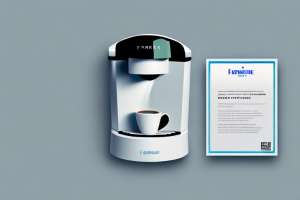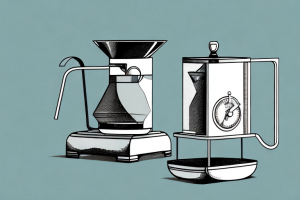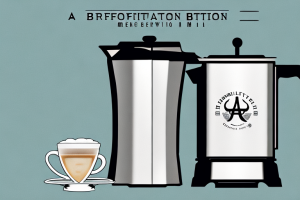Mold Coffee Maker

A coffee maker with mold growing on it
Coffee has been our go-to beverage for decades, providing us with energy and warmth to kickstart our day or relax at the end of a long day. However, have you ever heard of mold lurking in your coffee maker? Mold can grow in almost any environment, and your coffee maker is no exception to the rule. Mold in your coffee maker can pose several health risks, and it’s essential to take it seriously. In this article, we’ll be discussing the dangers of mold in your coffee maker and how you can prevent its growth.
The Dangers of Mold in Your Coffee Maker
Mold in your coffee maker can cause severe health issues, with some of the most common symptoms being respiratory problems, headaches, allergies, and even asthma. Drinking moldy coffee can lead to vomiting, stomach issues, and even neurological problems, which can make your life miserable. Moreover, you might need extensive medical treatment to get rid of these problems.
One of the main reasons why mold grows in coffee makers is due to the warm and moist environment that it provides. If you don’t clean your coffee maker regularly, mold can start to grow in the water reservoir, coffee pot, and even in the coffee filter. Therefore, it is essential to clean your coffee maker thoroughly after every use to prevent mold growth.
Another way to prevent mold growth in your coffee maker is to use distilled water instead of tap water. Tap water contains minerals and other impurities that can promote mold growth. Distilled water, on the other hand, is free from impurities and minerals, making it less likely for mold to grow in your coffee maker.
Understanding the Causes of Mold Growth in Your Coffee Maker
Mold flourishes in damp and dark environments, and your coffee maker can provide an ideal breeding ground for it. Some factors that contribute to mold growth in your coffee maker include not cleaning it regularly, using dirty water, and not letting your coffee maker dry completely before using it again. Furthermore, you might be more prone to mold growth if you live in a humid environment.
Another factor that can contribute to mold growth in your coffee maker is the type of coffee you use. Some coffee blends contain more oils than others, which can leave a residue in your coffee maker that promotes mold growth. Additionally, if you leave coffee grounds in your coffee maker for too long, they can create a moist environment that is conducive to mold growth.
To prevent mold growth in your coffee maker, it is important to clean it regularly with a mixture of vinegar and water. You should also use clean, filtered water and let your coffee maker dry completely before using it again. If you live in a humid environment, consider using a dehumidifier in your kitchen to reduce moisture levels. By taking these steps, you can enjoy a fresh, mold-free cup of coffee every morning.
Signs That Your Coffee Maker Has Mold
It would be best if you always kept an eye out for the signs of mold growth in your coffee maker. Some of the common signs include the smell of mildew coming from your coffee maker, black or brown spots in the water reservoir or on the coffee machine’s surface, and a metallic taste in your coffee. If you notice any of these signs, it’s essential to take prompt action to prevent mold from spreading.
In addition to the signs mentioned above, another indication that your coffee maker may have mold is if you experience respiratory symptoms such as coughing, wheezing, or shortness of breath after drinking coffee made from the machine. Mold spores can become airborne and cause respiratory issues, especially for those with allergies or asthma. If you suspect that your coffee maker has mold and are experiencing respiratory symptoms, it’s best to stop using the machine and seek professional cleaning or replacement.
How to Clean Your Coffee Maker to Prevent Mold Growth
Cleaning your coffee maker should be a part of your regular maintenance routine. You can start by using a cloth and warm, soapy water to wipe the outer surface, the filter basket, the carafe, and other removable parts. Use a scrub brush or a toothbrush to get rid of stubborn mold. Besides this, you can also use vinegar to help remove the mold. Fill the reservoir with vinegar and let it sit for around thirty minutes, turn it on to run it through a cycle, and then run fresh water through the coffee maker to get rid of any vinegar residue. This will help get rid of any lingering mold spores and prevent its growth.
However, there are other ways to prevent mold growth in your coffee maker. One of the most effective ways is to make sure that you dry all the parts thoroughly after cleaning. Moisture is one of the main factors that contribute to mold growth, so it’s important to make sure that there is no water left in the coffee maker. You can use a clean towel or air dry the parts before reassembling the coffee maker.
Another way to prevent mold growth is to use filtered water instead of tap water. Tap water contains minerals and other impurities that can accumulate in the coffee maker and create a breeding ground for mold. Using filtered water will not only prevent mold growth but also improve the taste of your coffee.
Natural Remedies for Removing Mold in Your Coffee Maker
Several natural remedies can help you get rid of mold in your coffee maker. For instance, baking soda mixed with water can help scrub away stubborn mold and prevent its growth. Additionally, lemon juice can also help disinfect your coffee maker and provide a fresh smell. You can use these natural remedies in combination with the vinegar solution to keep your coffee maker clean and mold-free.
Another effective natural remedy for removing mold in your coffee maker is hydrogen peroxide. Mix one part hydrogen peroxide with two parts water and use the solution to clean the inside of your coffee maker. This solution is particularly effective in removing tough mold stains and preventing the growth of new mold.
It’s important to note that prevention is key when it comes to mold in your coffee maker. After each use, make sure to empty any remaining water from the reservoir and wipe down the inside of the machine with a clean, dry cloth. Additionally, consider using filtered water in your coffee maker to reduce the likelihood of mold growth.
Best Cleaning Products for Removing Mold in Your Coffee Maker
Several products in the market help clean your coffee maker and remove mold. Some of the best cleaning products include descaling solutions, disinfectants, and coffee machine cleaners. Be sure to read the label to ensure that the product you choose is safe to use in your coffee maker and follow the instructions provided.
It is important to note that regular cleaning of your coffee maker can prevent mold growth. After each use, be sure to empty the carafe and rinse all removable parts with hot, soapy water. Wipe down the exterior of the machine with a damp cloth. Additionally, consider using filtered water in your coffee maker to reduce mineral buildup and prevent mold growth. By taking these preventative measures and using the right cleaning products, you can ensure that your coffee maker stays mold-free and produces delicious, safe coffee.
Tips for Regular Maintenance to Keep Your Coffee Maker Mold-Free
Preventing mold growth in your coffee maker is not a one-time fix. It requires regular maintenance and care to keep it mold-free. Here are some useful tips to keep in mind:
- Always empty and clean the carafe and filter basket after each use.
- Rinse the water reservoir with clean water after use.
- Be sure to clean your coffee maker at least once a month thoroughly.
- Use high-quality water to prevent mineral buildup, which can lead to mold growth.
- Store your coffee maker in a cool and dry place when not in use.
In addition to these tips, it’s important to regularly check the coffee maker’s water filter. If the filter is dirty or clogged, it can lead to mold growth and affect the taste of your coffee. Replace the filter as recommended by the manufacturer or at least every three months. Also, if you notice any signs of mold, such as a musty smell or visible growth, immediately stop using the coffee maker and thoroughly clean it before using it again.
Can You Still Use a Coffee Maker with Mold?
It is better to refrain from using your coffee maker if you spot mold. Continuing to use your coffee maker would mean consuming harmful mold spores that can cause several health issues in the long run. Instead, clean your coffee maker thoroughly or replace it altogether to keep yourself safe.
The Importance of Replacing Old Coffee Makers to Avoid Mold Growth
Coffee makers, like any other appliance, have a limited lifespan. Replacing your old coffee maker can help prevent mold growth and keep you safe from harmful spores. Old coffee makers tend to accumulate mold on the surface and other hard-to-reach places, making it challenging to remove and keep them clean. Therefore, it is critical to replace your old coffee maker when it reaches the end of its lifespan.
How to Store Your Coffee Maker Properly to Prevent Mold Growth
Storing your coffee maker correctly is essential to prevent mold growth in the long run. Be sure to let it dry out thoroughly before storing it away. Keep it in a dry place away from direct sunlight, or any other sources of moisture to prevent mold from growing on the surface. Additionally, be sure to store your coffee maker in a sealed container or a plastic bag to prevent dust and other particles from settling on it.
Common Misconceptions About Cleaning a Coffee Maker and Preventing Mold
There are several misconceptions about cleaning a coffee maker and preventing mold. For instance, some people think that rinsing the coffee maker with hot water is enough to get rid of mold spores. However, this is not precisely the case, and it would be best to use vinegar or other cleaning solutions to hit those hard-to-reach areas.
How Often Should You Clean Your Coffee Maker?
As mentioned earlier, cleaning your coffee maker should be a part of your regular maintenance routine. Ideally, you should clean your coffee maker thoroughly at least once a month. However, suppose you live in a humid environment or use your coffee maker frequently. In that case, it is better to clean it more regularly to keep those harmful mold spores at bay.
The Health Risks of Drinking Moldy Coffee
Drinking moldy coffee can pose several health risks, ranging from mild to severe. Mold contains mycotoxins that can harm your body over time, leading to several complications. Some of the common complications include respiratory problems, headaches, allergies, neurological issues, and even cancer in some cases. Therefore, it is essential to get rid of any mold in your coffee maker and avoid consuming it.
Troubleshooting Tips for Persistent Mold Growth in Your Coffee Maker
If you have already tried cleaning your coffee maker using natural remedies, vinegar solutions, and cleaning products, and you still have persistent mold growth, it might be time to replace your coffee maker. It is not worth compromising your health over a simple appliance, and replacing it would be the best way forward.
Conclusion
Preventing mold growth in your coffee maker can seem like a daunting task, but it is essential to ensure your health and wellbeing. Be sure to clean your coffee maker regularly, use high-quality water, store it correctly, and replace it when it reaches the end of its lifespan. Do not compromise your health over a simple appliance and enjoy your mold-free coffee.



